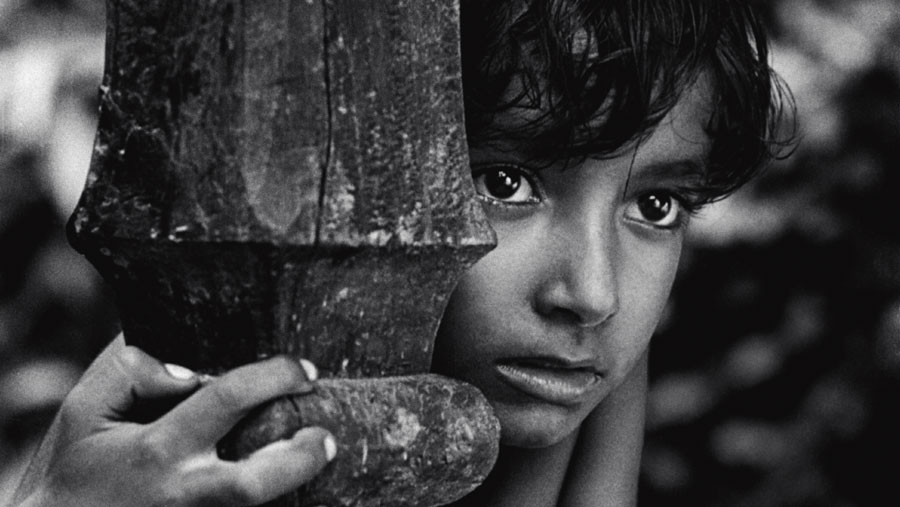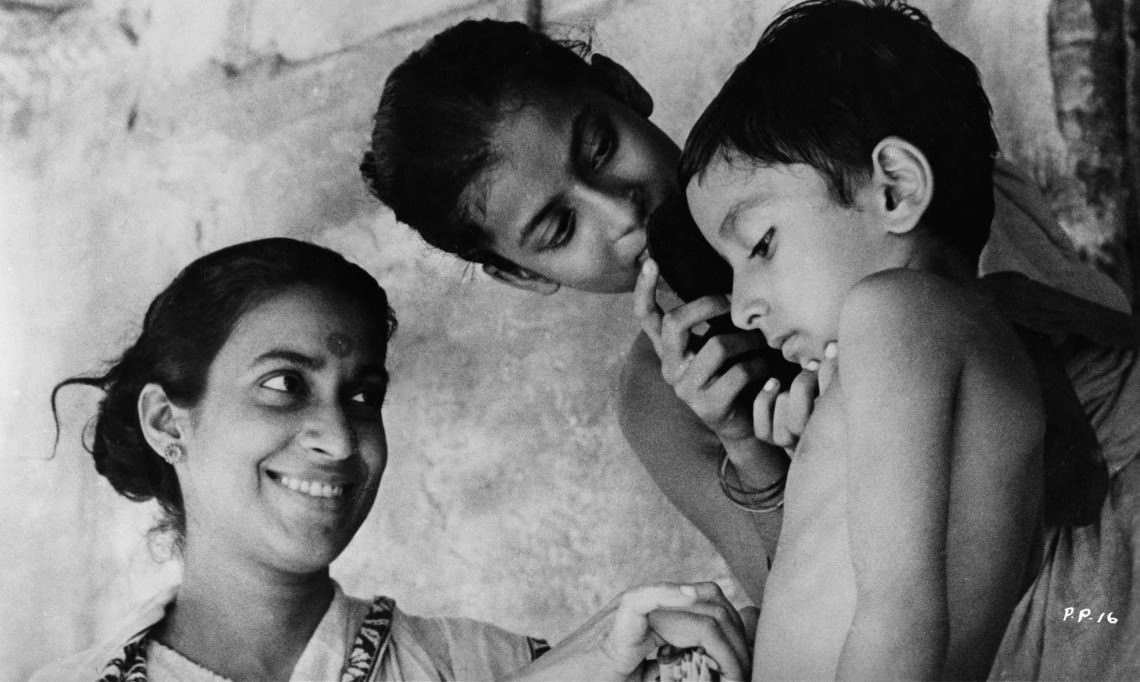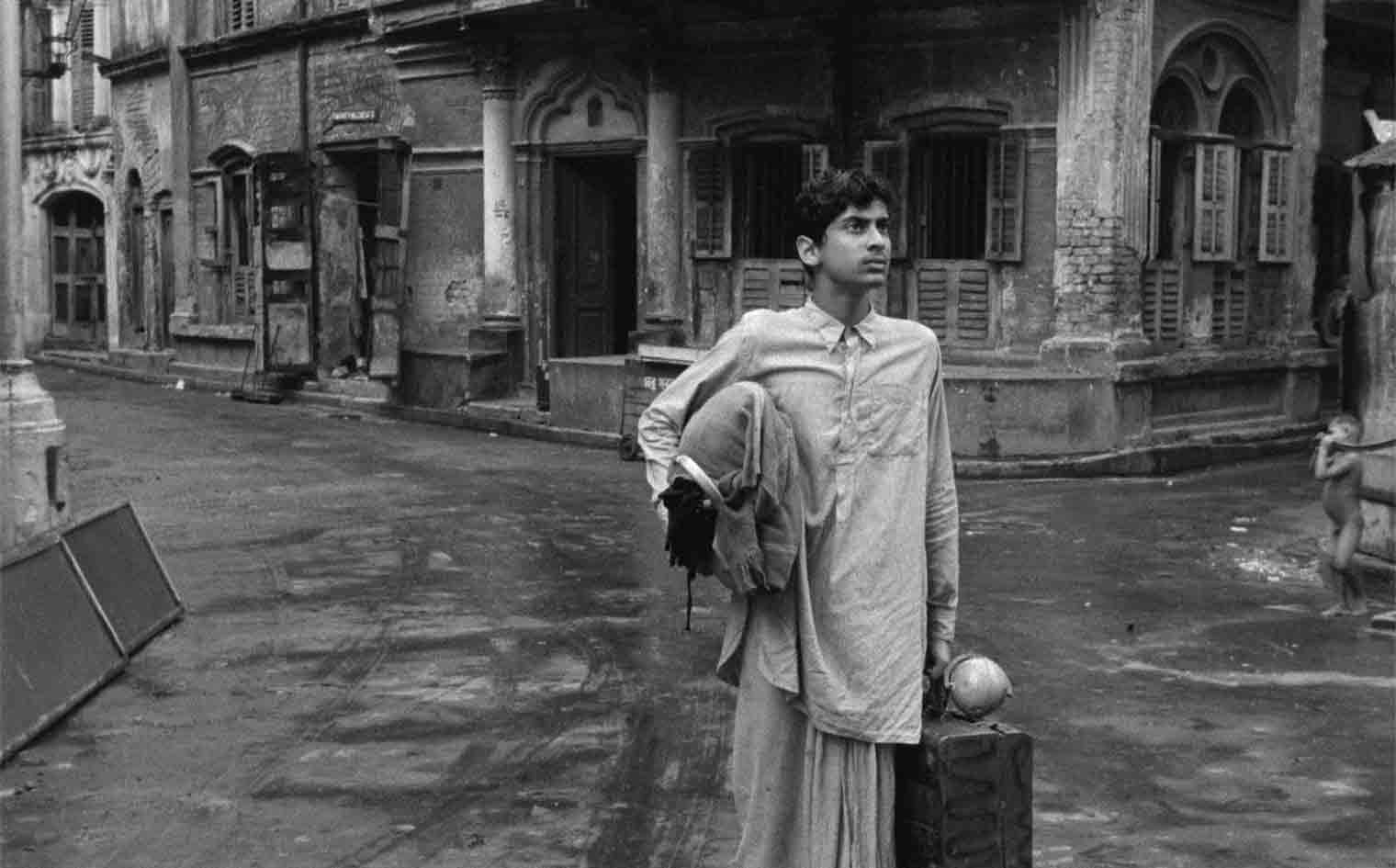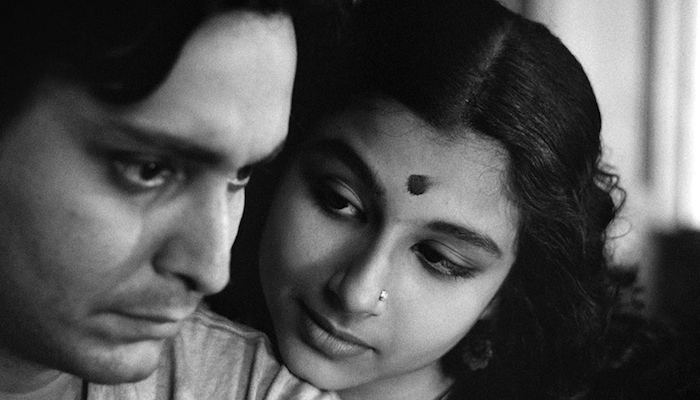
“Do all fathers have pigtails?” is the heartbreaking question asked by a young boy who knows that his father is alive somewhere in Calcutta but whom he has never seen in his entire little life. That he was being chased by a stranger for playing a prank on a fellow native before he engaged in a conversation with him, forms an important point in Apur Sansar (or The World of Apu, c. 1959), the final episode of arguably one of the greatest trilogies of all time – the Apu trilogy – written, directed, and produced by renowned Indian Bengali filmmaker Satyajit Ray in the 1950s, based on Bibhutibhushan Bandopadhyay’s two novels, Pather Panchali and Aparajito. Along with a melodious background jingle by maestro Pandit Ravi Shankar that plays through, it is one of the most memorable sequences of the films.
On November 1st 2015, during the 17th MAMI Mumbai Film Festival, the trilogy came back to life in 4K resolution version. Restored by Criterion Collection and presented and distributed by Janus Films, it enthralled its audience, for many of the people sitting in the packed auditorium of PVR Premiere at Juhu, Mumbai were millennials and post-millennials who had never seen the films on the big screen before. The original negatives of the films were destroyed in a fire in the Henderson’s film lab warehouse in South London in 1993, a year after Ray was awarded the Honorary Academy Award. The restoration work is commendable, mainly because it relied on extra snippets of the originals and the whole films were reconstructed from scratch.

The films tell the critical, tragic, and coming-of-age story of a Bengali boy named Apu from his childhood, when he lives with his parents and elder sister, to the time when he ponders about his education, to finally his struggling days as a broke young man who makes his ends meet by working as a lecturer. With character transformation as the most important sub-theme in his films, Ray brilliantly samples elements of family, poverty, and the thirst for worldly knowledge, with subtle yet remarkable hints at faint hedonism and desolation. Played beautifully by two child artistes and later by a lesser known mature actor (chronologically: Subir Banerjee, Pinaki Sen Gupta, and Soumitra Chatterjee), Apu chiefly tries to pursue his varied interests of being a curious mischief machine to being a literary enthusiast as a cover to escape from the inconveniences that as a part of a poor family he has endured all his childhood.
“Ray brilliantly samples elements of family, poverty, and the thirst for worldly knowledge, with subtle yet remarkable hints at faint hedonism and desolation.”
Once he gets wind about a world that exists outside his closed or restricted circles through a window, a local school in Bengal, there is no looking back for Apu. Now staying with his widowed mother (played gracefully by the talented Karuna Banerjee), Apu disregards his responsibilities as a son or a successful, young priest (that his mother wants to see her son as) because all he wants to do is explore the world. His sickly mother gives several inklings about her variance with her son’s course of action, but they are hardly captured by the ever-inquisitive and oblivious Apu. The inevitable death of his mother slightly blurs his vision at the end of Aparajito (1956), but he regains his clarity even though still fighting partial unemployment and insolvency. As a life, at the end, Apu embraces the same status he had been obliquely trying to avoid, giving a closure to his otherwise eventful order which was riddled with incessant celebrations of misfortune and want.

“Apu’s calamitous life can, as a result, be a fable for all of us who demote relationships and family love to the lower tiers of our priority list.”
Familial relations are currently fading as the whole world is going brutally individualistic. With the mantra of ‘each man for himself,’ people no longer fathom the significance of relations, whereas it is the basic and the most important requirement in this journey we call life. We may not realize it in these times, where being busy is a fashion and sometimes a necessity, but being withdrawn from friendly relationships and kinships is the biggest threat we presently face, from a semi-anthropological point of view. Apu’s calamitous life can, as a result, be a fable for all of us who demote relationships and family love to the lower tiers of our priority list. The three Bengali films teach us many things at once, but the biggest helping we can take from them is to give a notch more attention to the people closer to us and cater to their needs rather than to those who are total strangers to us and who are in the form of just a static. The world can be a much better place if the idea of families thrives and that of self-interest dissolves.
More than five decades after people around the world were captivated by Ray’s masterwork, the primary theme still remains material. Poverty is still prevalent everywhere, and the families that suffer from it have complementing tragedies to narrate, hurtful episodes to regret, and grueling futures to live, just like Apu who has more than half of his life to live at the end of Apur Sansar. Such lives may only have affliction to talk about, but there is always hope, as is evident, and this trilogy is just a “ray” of it and some more.

Considered amongst the greatest films ever made in the history of world and Indian cinema, Pather Panchali was Ray’s first full length feature film which was made on a shoestring budget in 1955, and popularized as well as revolutionized the Parallel Cinema movement in India. The three films were critically acclaimed around the world, and won numerous awards in various prestigious film festivals, which was a big rarity at that time.
A quote by a Gujarati man sitting beside me is enough to describe the triumph of the three movies: “Watching the Apu films on the big screen had always been a dream. Today, I lived it, and it was wonderful.”
A quote by a Gujarati man sitting beside me is enough to describe the triumph of the three movies, which were screened back to back, and which received huge rounds of applause during the end credits. Having previously seen the films, the septuagenarian commented, “Watching the Apu films on the big screen had always been a dream. Today, I lived it, and it was wonderful.” The only qualm he had was that he was not a Bengali to receive the pure pleasure of watching the milestone films of classic Bengali cinema.















